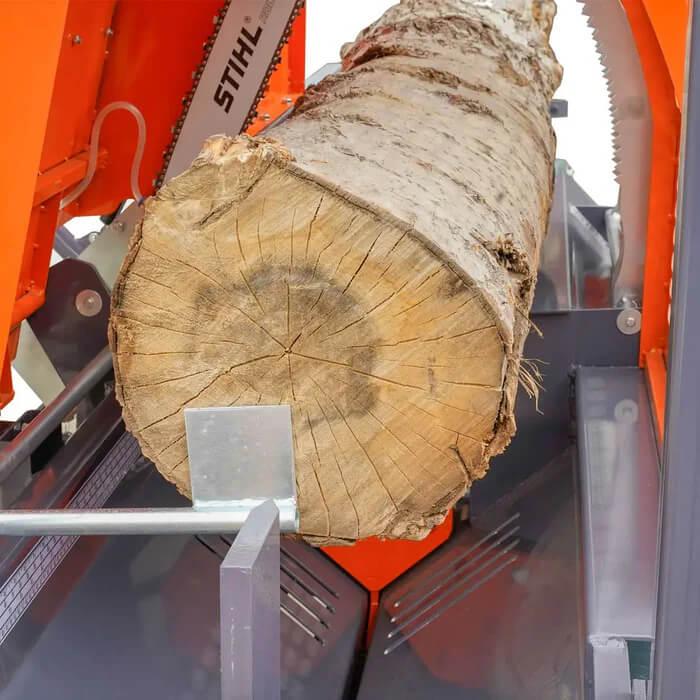Press release
Winder Machines vs. Manual Labor: A Cost-Benefit Analysis
In manufacturing, the choice between mechanization and manual labor has far-reaching implications. One of the most prominent examples of this trade-off exists in the use of winder machines versus manual winding processes. This article presents a comprehensive cost-benefit analysis comparing the adoption of winder machines with continuing reliance on manual labor. We'll explore economic, operational, and strategic factors to help business owners and production managers make informed decisions.• Understanding the Basics
What Is a Winder Machine?
A winder machine (https://www.itascaautosys.com/products/wire-guides/) is an industrial device designed to wind materials-such as wire, yarn, film, paper, or textiles-onto a spool or roll. These machines are highly customizable depending on the type of material and production scale. Modern winder machines are typically automated or semi-automated, incorporating sensors, programmable logic controllers (PLCs), and advanced tension control systems to ensure consistent quality.
Manual Labor in Winding Processes
Manual winding involves human workers performing the same tasks using hand tools or rudimentary equipment. While it provides flexibility and lower entry costs, manual winding is labor-intensive, time-consuming, and prone to inconsistencies in output.
• Cost Considerations
Initial Investment
Winder Machine: Purchasing and installing a high-quality winder machine can cost anywhere from $10,000 to over $100,000, depending on complexity and customization.
Manual Labor: Requires minimal upfront costs. Basic tools and workstations may total a few hundred to a few thousand dollars.
Verdict: Manual labor wins in terms of startup affordability.
Operational Costs
Winder Machine:
Electricity and Maintenance: Requires ongoing power and periodic maintenance.
Training: Operators must be trained, though fewer are needed overall.
Manual Labor:
Wages: Multiple workers needed to match the output of a single machine.
Human Error: Higher rates of waste and rework add hidden costs.
Verdict: Winder machines are more cost-effective in high-volume environments due to reduced labor and waste.
• Productivity and Efficiency
Speed and Output
A winder machine can operate continuously with minimal downtime, often running multiple shifts per day with output measured in thousands of feet or units per hour. In contrast, manual labor is limited by human speed, endurance, and shift patterns.
Example: One industrial winder machine can produce 5,000 feet of wire windings in an hour, whereas a skilled human might achieve 500-800 feet in the same time under optimal conditions.
Verdict: Winder machines offer an exponential increase in throughput.
Consistency and Quality
Machines are programmed for uniformity. They maintain consistent tension, alignment, and speed. Manual winding, however, varies from worker to worker, introducing inconsistencies that may affect downstream processes or product quality.
Verdict: Winder machines produce more consistent, high-quality results.
• Workforce Implications
Employment Levels
Replacing manual labor with machines can reduce the number of low-skilled jobs but may create demand for technicians and operators with specialized training.
Training and Skill Development
Although initial training for machine operation is required, the long-term development of a skilled workforce benefits companies investing in technology. Upskilling also improves employee retention and career growth opportunities.
Verdict: While machines can reduce headcount, they encourage skill specialization and can improve job satisfaction for remaining employees.
• Scalability and Flexibility
Scalability
Winder machines are inherently scalable. Multiple machines can be added as production needs grow. Manual processes require hiring, training, and managing more people-an inherently slower and more error-prone path to growth.
Flexibility
Manual labor offers greater adaptability for custom or small-batch work. Machines can be rigid unless specifically configured for variability, which may increase costs.
Verdict: Machines are superior for scaling consistent production, while manual labor may be useful for niche, custom tasks.
• Safety and Ergonomics
Winding tasks often involve repetitive motion, sharp tools, and potentially hazardous materials. Manual workers are more exposed to risks such as repetitive strain injuries, cuts, and fatigue.
Winder machines reduce direct human interaction with hazardous components, improving overall workplace safety when proper safeguards and maintenance routines are in place.
Verdict: Winder machines enhance worker safety when implemented correctly.
• Environmental and Waste Considerations
Material Efficiency
Winder machines minimize waste by maintaining tension and alignment precisely, which helps avoid product defects and material loss. Manual processes are more prone to overrun, uneven winding, or breakage, leading to higher junk rates.
Energy Consumption
Machines consume electricity, but overall energy consumption per unit produced can be lower due to speed and efficiency.
Verdict: Machines are more eco-efficient in the long run despite their power requirements.
• Total Cost of Ownership (TCO)
Let's break down the total cost of ownership over a 5-year period:
Factor
Winder Machine
Manual Labor
Upfront Cost
High
Low
Labor Cost
Low (1-2 operators)
High (3-10+ workers)
Maintenance/Repairs
Moderate
Low
Waste & Rework Costs
Low
High
Training & Supervision
Low
Moderate
Downtime
Low
High
ROI Timeframe
12-24 months
N/A
In high-output environments, winder machines typically achieve a full ROI within 1-2 years, while manual labor incurs ongoing costs without an equivalent productivity boost.
• Industry Applications and Use Cases
Textile Industry
Winder machines are essential in textile production for spooling yarn and thread at high volumes, where consistency is critical.
Wire & Cable Manufacturing
Precision winding is crucial for electrical components. Machines ensure uniform tension and avoid kinks or breaks in wire that could lead to failure.
Packaging and Film
For products like stretch film, foil, or laminated sheets, high-speed winders streamline operations and reduce material waste.
Verdict: In nearly all industrial sectors where winding is a core process, automation through a winder machine is standard due to the volume and precision required.
• Making the Decision: Key Takeaways
Factor
Ideal for Winder Machine
Ideal for Manual Labor
Production Volume
High
Low to moderate
Product Type
Standardized
Custom/specialty
Budget
Mid-to-high
Low or startup
Labor Availability
Limited or costly
Readily available, cost-effective
Quality Demands
High and consistent
Variable or low-volume
Expansion Goals
Rapid scaling and optimization
Slow or uncertain growth trajectory
• Final Thoughts
Transitioning from manual labor to a winder machine system is a strategic move that pays dividends in productivity, quality, safety, and long-term cost efficiency. Although the initial investment may seem steep, the benefits significantly outweigh the drawbacks for most manufacturers.
Still, a hybrid approach may work best for businesses handling both high-volume standard products and low-volume custom jobs. As automation technology becomes more accessible and cost-effective, the case for mechanization continues to strengthen.
Whether you're operating a small workshop or managing a large-scale facility, understanding this cost-benefit landscape can guide you toward smarter, more sustainable decisions for the future of your business.
Office 7602 182-184 High Street North East Ham London E6 2JA
Finixio Digital is a UK-based remote-first Marketing & SEO Agency helping clients worldwide. In only a few short years, we have grown to become a leading Marketing, SEO, and Content agency.
Contact:
Mail: Media.finixiodigital@gmail.com
Phone: +44 7577 509325
This release was published on openPR.
Permanent link to this press release:
Copy
Please set a link in the press area of your homepage to this press release on openPR. openPR disclaims liability for any content contained in this release.
You can edit or delete your press release Winder Machines vs. Manual Labor: A Cost-Benefit Analysis here
News-ID: 4121561 • Views: …
More Releases from Finixio Digital

Reducing Waste and Downtime with Automated Visual Inspection
In manufacturing, profitability isn't just about what you make; it's about what you don't lose. Two of the greatest silent killers of profit are waste and downtime. Waste-in the form of bit, rework, and raw materials-is a direct hit to your bottom line. Downtime-the unscheduled stops, slow troubleshooting, and line bottlenecks-cripples your efficiency and output.
For decades, quality control (QC) was often part of the problem. A manual inspection process is…

TMG Industrial Launches Heavy-Duty Firewood Log Splitter Processor Conveyor for …
TMG Industrial, a leading manufacturer of professional-grade agricultural and construction equipment, has officially introduced the TMG Industrial 20-Ton Firewood Log Splitter Processor Conveyor, a robust and highly efficient solution designed for commercial firewood processing and large-scale wood handling applications.
The launch reinforces TMG Industrial's commitment to providing durable, performance-driven machinery for forestry, farming, and industrial users across North America. Built to streamline operations and reduce manual labor, the TMG-GLS20 Firewood Processor…

Inside the Creative AI Boom: How FaceswapAI Empowers a New Generation of Digital …
In the last few years, the rise of manufactured insights has done more than change technology-it's revolutionized inventiveness itself. From short-form video stages to personalized showcasing, AI has turned regular clients into full-fledged makers, originators, and producers. Among the unused era of AI-driven instruments forming this computerized renaissance, FaceswapAI (https://www.faceswapai.tech/) stands out as an effective partner for imaginative business people looking to scale their content, construct their brands, and charm…

Best Practices for Access Control Systems Installation in Commercial Spaces
Installing an access control system (https://www.sensoraccesscontrol.com/access-control/) in commercial spaces is key to protecting your business and managing who enters your facility. Done right, it improves security, controls traffic flow, and can reduce costs. But proper installation is essential to get all these benefits without disruptions.
This guide will walk you through the best practices for installing access control systems from start to finish. It explains what to consider, how to choose…
More Releases for Winder
Key Factor Supporting Twister Winder Market Development in 2025: Surge In Textil …
Use code ONLINE30 to get 30% off on global market reports and stay ahead of tariff changes, macro trends, and global economic shifts
How Large Will the Twister Winder Market Size By 2025?
The market size of the twister winder has experienced consistent growth in the last few years. It is projected to expand from $14.46 billion in 2024 to $15.11 billion in 2025, demonstrating a compound annual growth rate (CAGR) of…
Twister Winder Market Key Players, Share and Forecast Outlook
On April 30, 2025, Exactitude Consultancy., Ltd. released a research report titled "Twister Winder Market". This report covers the global Twister Winder market sales, sales volume, price, market share, ranking of major companies, etc., and provides a detailed analysis by region, country, product type, and application. It also forecasts the market size of automotive kick sensors based on market patterns from 2020 to 2034 and future market trends. Along with…
Premier Home Solutions: Trusted Roofing Company Near Winder, GA
Premier Home Solutions is a top roofing company near Winder, GA. Known for its trustworthiness and quality, it provides many roofing services designed to meet the local community's needs.
Premier Home Solutions is a leading roofing company near me [https://www.google.com/localservices/prolist?g2lbs=AIQllVx1h_Fq8l2pKQNVgSg7EHkkBwUJZW_PJbDtWoeuOLObQEZiXnBOXwfPshj2UTUZH-Sl_Srrjj63qSdzAIAJsmbqY8kK2Ttq7qeDIEJNSW9wuhLF6FTv2frsr-hwsDOoFpqMYt9azUr6HwZVuEwOHeONjdQkiA%3D%3D&hl=en-US&gl=us&ssta=1&oq=roofing+company&q=roofing+company+near+me&src=2&q=Premier+Home+Solutions+winder&spp=Cg0vZy8xMXZzNTFsX2NzOqQBV2lVUUFCQUJFQUlpSFhCeVpXMXBaWElnYUc5dFpTQnpiMngxZEdsdmJuTWdkMmx1WkdWeXFnRlFDZ2d2YlM4d2NuUXphQkFCTWg4UUFTSWJETkNDYVo3SEFweGtreHJqNGhVNlVoeUJuUFYyLUJlTGNWcmZNaUVRQWlJZGNISmxiV2xsY2lCb2IyMWxJSE52YkhWMGFXOXVjeUIzYVc1a1pYST0%3D&slp=MgBAAVIECAIgAGgBiAEAmgEGCgIXGRAA&scp=ChdnY2lkOnJvb2ZpbmdfY29udHJhY3RvchIgIghtYXAgYXJlYSoUDZ4YQhQVkAIYzh0bWkQUJRyhGs4aACoSUm9vZmluZyBjb250cmFjdG9y] in Winder, GA, renowned for delivering exceptional roofing services with a strong reputation for trust and excellence. Whether you need minor repairs or a complete roof replacement, Premier Home Solutions provides…
Premier Home Solutions: Leading Roofing Company in Winder, Georgia
In the center of Winder, Premier Home Solutions stands out as a dependable leader in the roofing sector. This company has a proven history of successfully combining traditional methods with innovative techniques.
In the heart of Winder, Premier Home Solutions reigns as a beacon of reliability in the roofing industry. With a track record that speaks volumes, this company has mastered the art of blending tradition with innovation. As the sun…
Analyzing Twister Winder Market Growth 2024
The twister winder market size has grown strongly in recent years. It will grow from $13.7 billion in 2023 to $14.46 billion in 2024 at a compound annual growth rate (CAGR) of 5.6%. The growth in the historic period can be attributed to automation in manufacturing, rise in apparel and textile consumption, quality and efficiency improvement, globalization of textile supply chains..
The twister winder market size is expected to…
Premier Home Solutions: High-Quality Roofing Services in Winder
Premier Home Solutions pledges excellence and reliability as your roofing partner. Their experienced team's dedication to superior craftsmanship and personalized service distinguishes them in the industry. Their comprehensive approach guarantees exceptional results customized to your needs, from detailed inspections to flawless project execution.
With Premier Home Solutions [https://www.premierhomesolutionsinc.com/] as your trusted roofing partner, excellence and reliability are promised and delivered on every project. Our seasoned team's commitment to superior craftsmanship and…
